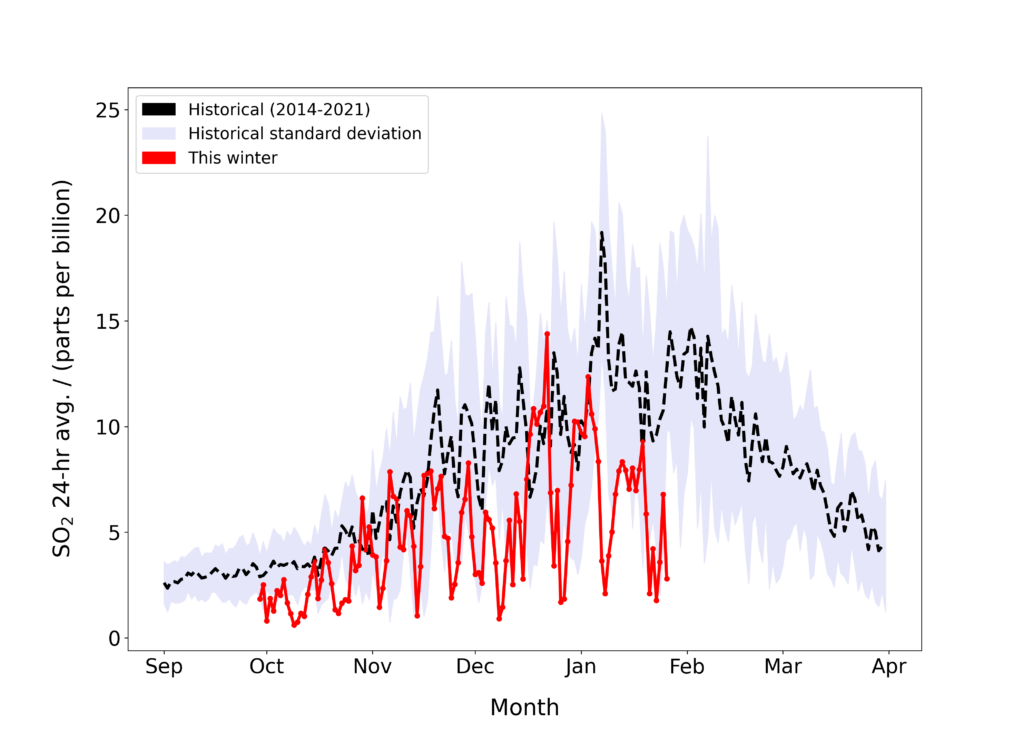In order to reduce fine particulate matter, PM2.5, a new Alaska DEC regulation, which came into effect on September 1st, 2022, was made to reduce sulfur in heating oil used in the Fairbanks North Star Borough (FNSB). When sulfur in fuels is burned, most of it is converted to SO2 gas, but a small part is converted to sulfuric acid, which condenses to PM2.5 particles and increases the PM2.5 concentration. By reducing fuel sulfur, this pathway should reduce and PM2.5 mass concentration should reduce. Due to high cost of ultra-low sulfur diesel, ADEC decided to require use of the less expensive #1 heating oil to replace higher-sulfur #2 heating oil as the way to reduce sulfur in PM2.5.
We can follow the response to this fuel sulfur reduction by measurement of SO2 gas, which is carried out by ADEC at the downtown NCORE site. Note that this winter’s SO2 data are preliminary and will be validated and published by ADEC later this winter. The figure shows this winter’s data in the red line through January 26, 2023. The backdrop for this winter’s data is the average of prior winters and the variability in the shaded region. You can observe that this winter has about half the SO2 as compared to prior winters, about the expected response for this regulation. You can also note that SO2 in Fairbanks oscillates between clean days, ones when there is no inversion, significant winds, or a storm and “bad days”, which are the still inverted days.
If you want to follow this cleanup of the air, you can go to the website http://alpaca.alaska.edu/ to see the most recent version of the the figure shown here. After this winter, we intend to carry out a retrospective analysis of both the effect of the regulation on SO2 (using finalized data) and on PM2.5 sulfur. We cannot make a real-time tracker for the reduction in PM2.5 sulfur because that analysis takes months, but we will be examining it as soon as we can.



